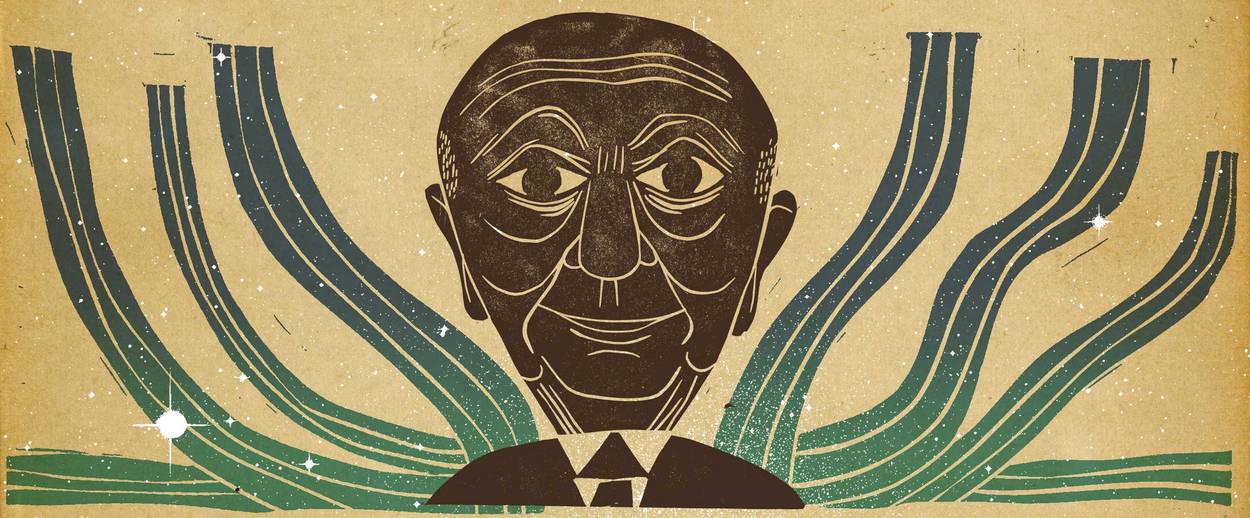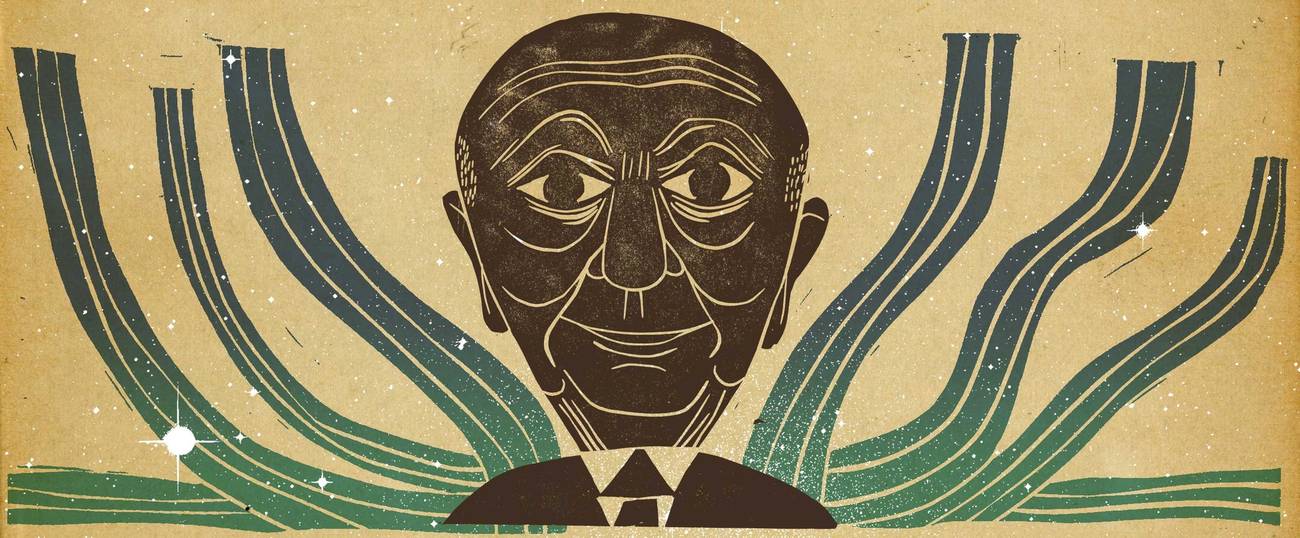Was Isaac Bashevis Singer Religious?
Twenty-six years to the day after the death of the great Yiddish-American Nobel Prize winner, the clarity of his moral voice rings ever more true




At a time of wholesale equivocation across social fronts—political, moral, religious—it is difficult to find a voice that is clear, knowledgeable, authentic, or complex. The chorus of shouts resounding from all corners of the cultural spectrum makes it hard to ground our convictions in solid perspectives not undermined by the severity of discourse rising around us. Looking to the past, we may find chilling parallels to times of great upheaval, without quite understanding how such extreme forces will manifest themselves in our time. Yet we can also look back to cultural figures who have survived such times to better understand the historical significance of our era while it is happening. In doing so, we create deep continuity between past, present, and future, not just for its own sake, but for the sake of our own spiritual and moral integrity—which becomes even more significant when attacked by false morality and claims of supremacy. In such times, the voice of Yiddish-American author Isaac Bashevis Singer gains new value, as an author who spent much of his time not only telling stories, but investigating the troubling tendencies of humankind to instigate destruction—and reclaiming, despite that destruction, a meaningful relationship to what religion is meant to do for the human spirit.

Singer has long been recognized as a master storyteller, his literary achievement embraced for its specific cultural content no less than for its universal themes. He was considered a secular writer who wrote about the old ways of Eastern European Jews. But his personal connection to the tradition he inherited, including the orthodox Judaism into which he was born, remained conflicted throughout his life as a writer. The modernity of his themes and techniques, his ability to reach secular audiences, his historical knowledge, coupled with the skill to make it interesting to contemporary readers—all this helped make Singer attractive to those who wanted a feeling of the old world wrapped up in current sensibilities. Singer appeared to understand the appeal of his image as a storyteller-of-old, playing it up in his many interviews and appearances, and developing a public persona that remembered the past without adhering to its harsh standards in the present. His artistic project, especially right after the Holocaust, aimed to create a record of the Polish Jewish life that had been lost—in a way that would speak to postwar audiences. But there may have been more to his project than memorializing the past. His work could also instigate, in certain hidden ways, an authentic Jewish life in the present—creating the conditions of a reinvigorated future that are increasingly necessary and relevant.
Fiction was where Singer’s Yiddishkeyt—which he translates as Jewishness and which I would suggest can be understood as Jewish life—found its fullest expression. It was his way of being Jewish with others. Unlike Jewish thinkers who found ways to channel different aspects of their Jewishness into scholarship, philosophy, or religious thought, Singer focused his attention on literature. And unlike other Jewish writers, his literary imagination focused on the mystical aspect of experience—on the power of spirit as it animates and drives the human soul and body—especially the function of what we call the erotic and demonic in human behavior. Singer’s eroticism was not about sexuality but a sense of mystery and excitement—the thrill that can be found in spirituality and also in religion. The demonic, too, was less about evil as an objective phenomenon, than the mysterious drives that led people into destructive behavior—manifesting itself as evil in the world. The soul seeks thrills, one might say, and finds it either through the erotic or demonic. And Singer believed that truly inspired religion harnessed the thrill of the erotic and channeled the spirit toward life rather than death.
In his stories, Singer repeatedly affirmed the power of religion to maintain identity, community, and tradition, yet he also portrayed its underbelly—its vulnerability to dogma and corruption. He used a subtle manipulation of literary technique and religious knowledge without fully revealing his personal convictions, and always placing emphasis on describing the struggle between human nature and human spirit. He never returned to an observant lifestyle, but there was a constant back-and-forth between his literary practice and his Yiddishkeyt. Some critics saw a measure of hypocrisy in this position, since it espoused behavior that Singer did not fulfill. Yet it also presented a challenge to bridge two paradigms—old-time orthodoxy and contemporary modernity—that were often in conflict throughout his lifetime. What he offered his readers, both Jewish and non-Jewish, was an old-world conscience, with its values and beliefs, alongside a modern consciousness, an awareness of the futility and absurdity of existence—creating a hybrid orthodox-existential moral position that could help stake out a meaningful life in the contemporary world.
***
Singer’s patterns of thought were deployed through literary images and structures in his fiction. His largely understudied critical articles reveal the deliberate stride of an author who, while developing his writing abilities and literary career over decades, thought out and articulated almost every step he took in literature—and then pretended that it came to him as naturally as walking. Singer appeared to fulfill genre expectations while stretching their boundaries, offering readers a familiar package while mixing up all the internal pieces into powerful new forms. Many scholars have spoken of his use of other storytelling forms—the Mayse-bukh stories (Stark-Adler), Rabbi Nachman’s tales (Roskies), journalistic reportazh (Miller)—experimenting to create new combinations of theme and structure. Yet this resulted in more than an approach to literature that had never existed before. Its fusion of forms put forth a unique vision that challenged common conceptions of past and present, religious and secular, tradition and progress. It made all sides question the validity of their assumptions.
A story like “The Destruction of Kreshev” (1943), starts as a shtetl love story that elevates the value of learning over wealth. But it soon exposes the dangers of intellectualism and finally ends with Dostoevskian motifs translated into the Yiddish language and Jewish context—crime (khet) and punishment (shtrof), repentance (tshuve), confession (moide and misvade), and penance (sigef). Singer even includes the corruption of a young woman and her suicide by hanging—taken straight from the repressed chapter of Dostoevsky’s Demons. Modern consciousness has reached Jewish conscience and the result is destruction (khurbn). Singer’s translation of forms and language from one literature into another results in an effect of thrill and discomfort. But it also stretches the boundaries of Jewishness, bringing foreign forms into familiar contexts, and helping pull Jewish thinking into the modern world. Yet the final vision remains closely determined by Judaism. In contrast to Raskolnikov’s case, the sins are left unredeemed by the punishment of suffering, and the story ends with the image of a father who, despite losing his daughter to iniquity, recognizes that this is God’s world and that, as a Jew, he must cling to God’s word—as it appears in the Torah and as it has been observed for generations. The world of the past has been infected by modern demons but the image of faith remains that of tradition.
Singer used Jewish modes of thinking to express universal ideas—just as he translated universal ideas into Yiddish and so introduced broader contexts into Jewish modes of thinking. Jewishness was no more or less central than universality, even if the former provided the symbols for the latter. The important part in Singer’s work is the ability to move back and forth between the two. And he does so by presenting the symbols of tradition at the same time that he frustrates their significance—showing their emptiness when not followed through with faith and intention. The marriage between Shloimele and Lise in “The Destruction of Kreshev” results not in companionship but in her disgraced death and with Shloimele going into exile—avek in goles. And while the characters in “Kreshev” wallow in sin and iniquity, Singer ends the story with a Jewish image of complex faith despite loss and pain. Lise’s father clings to Jewish tradition even after her death—praying during the high holidays, eating his holiday meals alone, building the booth for sukkot—and, after liquidating his estate and leaving the town that reminds him of misfortune, even leaves money for the town’s charities.
Outside of fiction, Singer was himself exiled from religious life by time and space. He existed in a no-man’s land between old-world Hasidism and modern nonobservance that could never again be bridged after the historical upheaval of the Second World War and the Holocaust. He was not religious in the orthodox sense he himself understood the term to mean, yet he was also not secular the way most people understood the term, because his spiritual worldview fed on an orthodox sensibility of the past and a strong belief in God. In his work, the symbols that provided comfort and strength in the ongoing iterations of exile were those that maintained and connected us to tradition. But this only worked if we chose them ourselves—if they were symbols of our choices. To engender an inspired Yiddishkeyt—a living Jewishness or Jewish life—meant to understand Judaism as choice. It also meant recognizing its limits in helping us cope with the same suffering that brought us to this understanding. Yet it was in our power to turn exile into Diaspora, alienation into community, and suffering into joy—resurrecting the symbols of tradition each time anew. Singer did this in fiction, depicting the conflict between tradition and spirit, his portrayal of Jewish life repeatedly resurrecting its symbols in the imaginations of his readers. And this is only one step from resurrecting them in reality.
Exile is the crisis that our freedom of choice can turn into action. While rooted in Judaism and carrying particular significance to those brought up with that history or tradition, Singer’s works touch on universal themes of personal growth and communal belonging. And by making the crisis palpable, his stories raise the dilemma of identity as a nexus of elements in tension—spirit and body, individual and community, action and choice, rebellion and tradition—with which everyone grapples, in varying degrees, at one point or another. The tension between these various opposing elements are staged in his narratives and while his characters fail to integrate them, his stories do succeed in conjuring them up in readers’ imagination—leaving us with the challenge of finding ways to integrate the different aspects of our own experience. While never returning to religious observance, Singer created works on the border of religion and rebellion, corruption and integrity, creativity and destruction—repeatedly invoking the conflict between demonic profanity and erotic religiosity. This in itself was a genuine expression of the challenge to live a good life, portrayed in traditional Jewish terms yet universally accessible to modern sensibilities, and opening these dilemmas to readers through spell-binding stories.
Underneath its aesthetic concerns, then, Singer’s writing carried a moral imperative, expressed in a portrayal of the life of the spirit in the material world. Where his characters fail to integrate Jewish particularity with universal morality, his stories succeed in conjuring up these elements in his readers’ imagination—in their conscience and in their consciousness—precipitating the challenge of finding ways to integrate the different aspects on their own. Unable to extricate himself from a traditional mindset and fully immerse himself into secularism, Singer created works that situated themselves on the border of religion and rebellion, corruption and integrity, creativity and destruction—invoking the conflict between demonic profanity and erotic religiosity, and the choice that these disparate impulses precipitate. This in itself amounted to a kind of spiritual-religious action that functioned within culture without any sense of threat or coercion. It was a genuine portrayal of the challenge to live a good life, portrayed in traditional Jewish terms accessible to modern sensibilities, and opening these dilemmas to readers through entertaining stories. Singer kept alive the wisdom and spirit of Judaism in works that would have been considered unacceptable in the traditional Jewish world from which he came. In a sense, his works themselves existed on the border between secular and religious texts—prompting us repeatedly to choose to live creatively.
***
Tablet is proud to present Isaac Bashevis Singer’s short story “The Gift of the Mishnah” in English for the first time. Originally titled “Mishnayes,” it was published in 1960 in Di goldene keyt and included in the Yiddish collection Gimpl tam, making it an important part of Singer’s oeuvre that never found its American audience. Moshe Spiegel’s English translation, made during Singer’s lifetime, was supervised and corrected by the author, and prepared for publication by David Stromberg. Read “The Gift of the Mishnah” here.
David Stromberg is a writer, translator, and literary scholar based in Jerusalem.